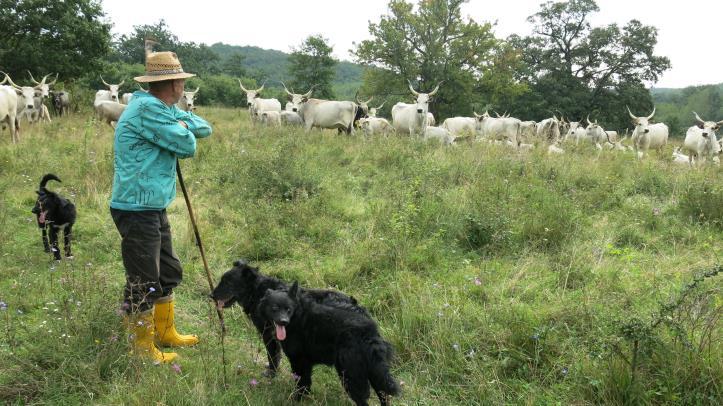
Wood pasture in Hungary
Description of system
Wood pastures were once common in Hungary, but they are currently declining with a current area of about 5500 ha. Traditional herding occurs in some of the remaining wood pastures, but this practice is threatened. Increasing formal recognition of the cultural and ecological value of wood-pastures creates some new opportunities.
Initial stakeholder meeting
The stakeholder meeting on 29-30 August 2014 in Bács-Kiskun and Tolna Counties in Southern Hungary was attended by 17 stakeholders. The workshop also functioned as the first National Agroforestry Forum in Hungary. Many of the key challenges associated with wood pasture in Hungary are legal in nature, with the suggestion by one speaker that “agroforestry” represents a law-less state. Forest grazing is currently prohibited by Hungarian forest law. Even though the silvopastoral systems are a traditional land use type in Hungary, little is known of its socio-economic value or the opportunities for management. Farmer interest in silvopastoral systems is growing. Potential areas for research include the legal status of agroforestry, assessment of its cultural and economic value, and opportunities for improved management.
If you would like to know about the activity of this group, please contact Dr. Andrea Vityi (vityi.andrea@emk.nyme.hu).
Download the initial stakeholder report
An initial stakeholder report was produced in October 2014.
Download the initial research and development protocol
A research and development protocol was produced in March 2015.
Download the system description
A system description describing the wood pastures at Tűzkövesbörc and Bogyiszlói in Hungary was produced in November 2015.
Lessons learnt
Anna Varga and Andrea Vityi have produced a lessons learnt report based on their participative research on wood pastures in Hungary. Some of the outputs are:
- A review of literature highlighted that wood pastures and illegal forest grazing were the main forms of silvopastoral agroforestry in Hungary. There is some outdoor pig production with trees, acorn feeding of cattle, and wild fruit production.
- There are about 33 000 hectares of wood pasture in Hungary.
- Best practices for renewing wood pasture were studied at two sites in the counties of Veszprém and Tolna. The most appropriate practices depend on the history of land management, the environment, and the climate.
- The second half of the report explains how awareness can be increased through the branding of products and through education. The report explains how agroforestry has been incorporated into the curricula of a Hungarian primary school.
- With support of AGFORWARD researchers, Hungarian law was changed in September 2017 to enable grazing, where beneficial, in non-native forests.